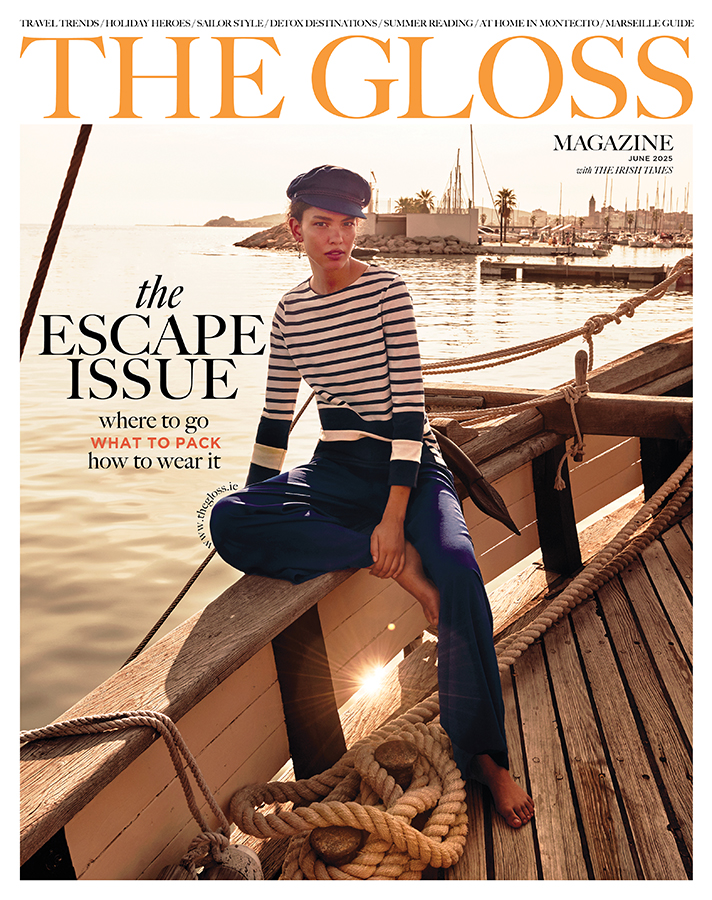With alertness, athleticism and attractive gear as benefits, PENNY McCORMICK reconsiders fencing …
Over the last two years we have all been privy to an (exhausting) round of parrying between the UK parliament and the EU foiling attempts by several British prime ministers to force a (no) deal. The fencing analogy yields plenty of puns but is particularly apt as the sport has often been described as mental chess; it gives the body a workout as well as the mind.
Des Gilhooly, chairperson of Irish Fencing explains, “Fencers are always trying to think two or three moves ahead of their opponent as well as constantly moving to take advantage of any opening that presents itself.” If alertness and being limber are the main side effects, the fashion community has also been inspired by the costumes. Those white shirts get us every time.

Renee Zellweger popped up in enviable fencing garb in her new Netflix serial What/if, while Gucci’s AW19 campaign depicts masks, reminiscent of the protective ones worn at fencing tournaments. Who can forget how, in her first collection as artistic director for Christian Dior in 2016, Maria Grazia Chiuri wowed with fencing-inspired pieces mixed with elegant dresses and tulle skirts. “Fencing is a discipline in which there is balance between thought and action,” said Chiuri. “The harmony between mind and heart is essential.”
Currently the fencing scene is thriving with the support of Sport Ireland’s funding to increase participation in the sport. Professor Michael Ryan of DCU, an Olympian fencer in 1964, has done much to promote the sport, while the longest running private club is Pembroke in Dublin 4. Its Estonian Maître D’Armes Olga Velma has been developing the programme and there are tempting birthday and corporate packages where teams can learn the basics in under three hours. (Who doesn’t want to challenge a co-worker to a duel?). Another club, Salle d’Armes Duffy, founded by Professor Patrick Duffy, also produced many of Ireland’s most successful fencers before being sold.
In the recent Interschools Championship (held in May), ten schools participated and Munster Blades coach Patrick Dight has taken transition year courses with which he has had much success. It’s still niche but Gilhooly admits, “We’ve seen a steady increase in people joining in recent years – and our gender balance is 50/50. Part of this increase is due to coaches becoming established and bringing the sport to a wider audience.”

Despite aristocratic roots and films such as The Princess Bride, Tomorrow Never Dies and Zorro giving us swashbuckling notions of fencing, all that is needed is a corner of a hall for practice, rather than cinematic crumbling staircases. Novices start by learning the stylised movements, working within a box or piste which is 1.5m wide by 14m long, with epée, foil and sabre, three kinds of weapon having unique methodologies. A pair of gutties (flat trainers or plimsolls) suffices, though once established the correct kit can be bought online. A glove costs €10.
The National Indoor Arena in Dublin was the setting for a Satellite World Cup event part of the Irish Open (Men’s Epée) in October with 25 pistes and 100 competitors (twelve years ago there were only 40 competitors and ten pistes). “It has become a highly respected tournament because of its regulated structure and the commitment of its coaches and volunteers,” says Gilhooly, who has been participating since university days. “I think it’s the greatest sport, being only one of four which has been present at the Olympics since their inception in 1896.”
As for its literary links – William Butler Yeats was taught by Ezra Pound when the latter was his secretary – and whoever has studied Hamlet knows the play ends in a duel between Hamlet and Laertes, on a symbolic level seen as representing two world views. Perhaps time for revision …
www.irishfencing.net





